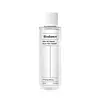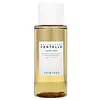What's inside
What's inside
 Key Ingredients
Key Ingredients

 Benefits
Benefits

 Concerns
Concerns

No concerns
 Ingredients Side-by-side
Ingredients Side-by-side

Water
Skin ConditioningGluconolactone 8%
Skin Conditioning2,3-Butanediol
HumectantButylene Glycol
HumectantTromethamine
BufferingGlycerin
HumectantStreptococcus Thermophilus Ferment
HumectantChlorella Vulgaris Extract
Skin ConditioningSodium Hyaluronate
HumectantHydrolyzed Hyaluronic Acid
HumectantPyrus Malus Juice
Skin ConditioningOzothamnus Diosmifolius Extract
Althaea Rosea Flower Extract
Skin ConditioningHydrolyzed Vegetable Protein
Skin ConditioningLactobacillus Ferment
Skin ConditioningPanthenol
Skin ConditioningGlucose
HumectantFructooligosaccharides
HumectantFructose
HumectantSodium PCA
HumectantSodium Phytate
1,2-Hexanediol
Skin ConditioningEthylhexylglycerin
Skin ConditioningCapryloyl Salicylic Acid
ExfoliatingDipalmitoyl Hydroxyproline
Skin ConditioningMaltodextrin
AbsorbentHydrogenated Lecithin
EmulsifyingStearic Acid
CleansingLinolenic Acid
CleansingSucrose
HumectantCeramide NP
Skin ConditioningCholesterol
EmollientPhytosphingosine
Skin ConditioningCeramide Ng
Skin ConditioningCeramide Ns
Skin ConditioningCeramide AP
Skin ConditioningCeramide As
Skin ConditioningCeramide EOP
Skin ConditioningCetearyl Alcohol
EmollientDisodium EDTA
Water, Gluconolactone 8%, 2,3-Butanediol, Butylene Glycol, Tromethamine, Glycerin, Streptococcus Thermophilus Ferment, Chlorella Vulgaris Extract, Sodium Hyaluronate, Hydrolyzed Hyaluronic Acid, Pyrus Malus Juice, Ozothamnus Diosmifolius Extract, Althaea Rosea Flower Extract, Hydrolyzed Vegetable Protein, Lactobacillus Ferment, Panthenol, Glucose, Fructooligosaccharides, Fructose, Sodium PCA, Sodium Phytate, 1,2-Hexanediol, Ethylhexylglycerin, Capryloyl Salicylic Acid, Dipalmitoyl Hydroxyproline, Maltodextrin, Hydrogenated Lecithin, Stearic Acid, Linolenic Acid, Sucrose, Ceramide NP, Cholesterol, Phytosphingosine, Ceramide Ng, Ceramide Ns, Ceramide AP, Ceramide As, Ceramide EOP, Cetearyl Alcohol, Disodium EDTA
 Reviews
Reviews

Ingredients Explained
These ingredients are found in both products.
Ingredients higher up in an ingredient list are typically present in a larger amount.
1,2-Hexanediol is a synthetic liquid and another multi-functional powerhouse.
It is a:
- Humectant, drawing moisture into the skin
- Emollient, helping to soften skin
- Solvent, dispersing and stabilizing formulas
- Preservative booster, enhancing the antimicrobial activity of other preservatives
Disodium EDTA plays a role in making products more stable by aiding other preservatives.
It is a chelating agent, meaning it neutralizes metal ions that may be found in a product.
Disodium EDTA is a salt of edetic acid and is found to be safe in cosmetic ingredients.
Learn more about Disodium EDTAEthylhexylglycerin (we can't pronounce this either) is commonly used as a preservative and skin softener. It is derived from glyceryl.
You might see Ethylhexylglycerin often paired with other preservatives such as phenoxyethanol. Ethylhexylglycerin has been found to increase the effectiveness of these other preservatives.
Gluconolactone is a PHA. PHAs are a great gentle alternative to traditional AHAs.
When applied, Gluconolactone has the same affect on skin as AHAs such as lactic acid. It helps dissolve the dead skin cells in the top layer of your skin. This improves texture and brightens the skin.
PHAs are more gentle than AHAs due to their larger structure. They do not penetrate as deeply as AHAs and take a longer time to dissolve dead cells. Studies show PHAs do not cause as much irritation.
Gluconolactone has some interesting properties:
In a 2004 study, Gluconolactone was found to prevent UV damage in mouse skin cells and has not been found to increase sun sensitivity. However, we still recommend wearing SPF daily.
This ingredient is is an created by reacting gluconic acid with an alcohol.
Learn more about GluconolactoneTromethamine helps balance the pH and improve the texture of a product. It is synthetically created.
As an emulsifier, Tromethamine prevents oil and water ingredients from separating. This helps stabilize the product and elongate a product's shelf life. Tromethamine also makes a product thicker.
Tromethamine helps balance the pH level of a product. Normal pH level of skin is slightly acidic (~4.75-5.5). The acidity of our skin is maintained by our glands and skin biome. Being slightly acidic allows our skin to create an "acid mantle". This acid mantle is a thin barrier that protects our skin from bacteria and contaminants.
Oral Tromethanmine is an anti-inflammatory drug but plays the role of masking, adding fragrance, and/or balancing pH in skincare.
1,3-Propanediol, 2-amino-2-(hydroxymethyl)-
Learn more about TromethamineWater. It's the most common cosmetic ingredient of all. You'll usually see it at the top of ingredient lists, meaning that it makes up the largest part of the product.
So why is it so popular? Water most often acts as a solvent - this means that it helps dissolve other ingredients into the formulation.
You'll also recognize water as that liquid we all need to stay alive. If you see this, drink a glass of water. Stay hydrated!
Learn more about Water